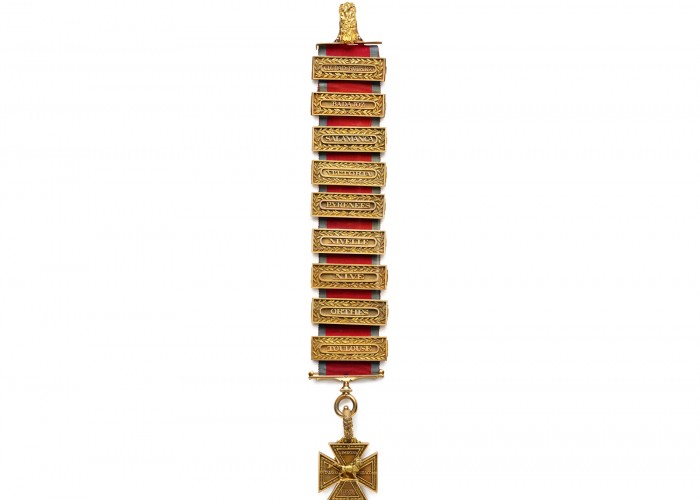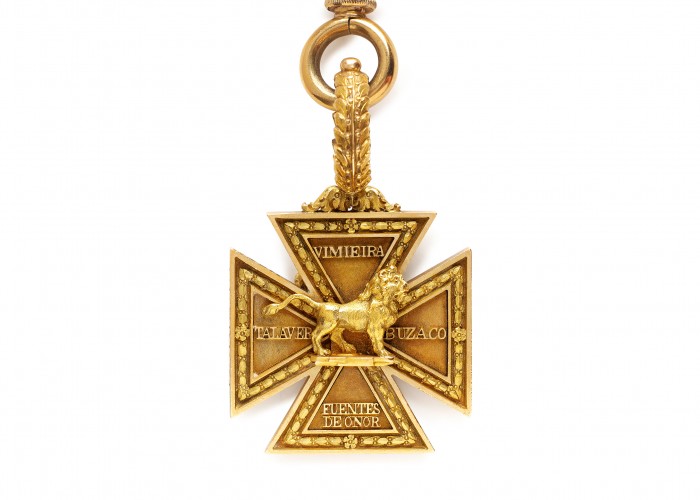Officer’s Peninsula Gold Cross
This splendid medal, in solid gold, honours the service of high-ranking officers who led the British Army during the Peninsular War in Spain and Portugal. The Peninsula Gold Cross was awarded to Lieutenant Colonels and above for service in the Spanish Peninsula in 1806-1814.
It was approved by the Prince Regent in 1813 and was given to those in command of a battalion who had been involved in at least four actions. The names of these battles were recorded on each arm of the cross, while further actions were marked with clasps. Crosses could be issued with the names of battles outside the Peninsula including Maida, Martinique and Guadalupe. A total of 164 gold crosses were awarded.
The design of the cross is very similar to the later Victoria Cross and probably provided the inspiration for that medal. The medal is considered the most prestigious award in the campaign series. It is finely decorated and features a British lion standing or statant.
The highest and unique award, a cross with 9 bars for a total of 13 actions, was given to the Duke of Wellington.
A round medal was given to men who had been in command at fewer than four actions. The name of the first action was inscribed on the rear of the medal and up to 2 clasps could be added before the Cross was actually awarded. This medal was instituted in 1810.
It is notable that common soldiers did not receive a medal until the Waterloo medal was issued in 1815, while in 1847 the silver Military General Service Medal (MGSM) was authorised and retrospectively awarded to all surviving veterans of the campaigns of the Revolutionary and Napoleonic Wars, irrespective of rank. Holders of the gold medals, crosses or additional clasps, however, were not eligible to claim identical clasps on the MGSM.
-
Use this image
You can download and use the high resolution image for use in a non-profit environment such as a school or college, but please take note of the license type and rights holder information below
- Rights Holder: English Heritage / Apsley House. Photography Relic Imaging Ltd.
- License Type: Creative Commons
Find it here
This object is in the collection of Apsley House – English Heritage









